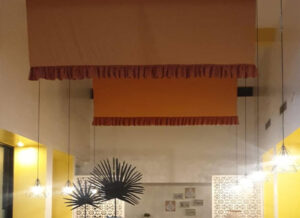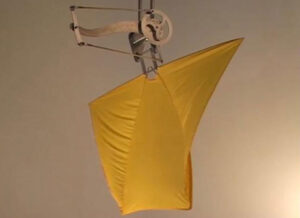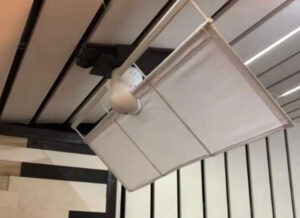As an artist, I have always been intrigued by traditional art forms. One such thing that not just caught my eye but went on to become my passion is the traditional Indian hand fan, popularly known as ‘Pankha’.
It all started around 40 years ago when I first envisioned collecting these beautiful artefacts. And today, when I look back, I wonder what an amazing journey it has been. The journey that started with scouting for hand fans across Indian villages and towns, is now a few thousand fans old and has fans from several parts of the world.
My collection of hand fans is mnemonic of the places that I have travelled to. From rural India that has kept this rare art form alive to various international destinations that boast a strong fan culture, the collection has fans from almost every location that counts. It also consists of fans that I bought from antique dealers who sold me these fans at sky high rates, on the pretext that these rare pieces of art came from palaces and havelis.
I also collected fans when I visited different countries. Africa, Egypt and the Middle East, far eastern countries like China, Korea and Japan, South East Asia, in particular Indonesia – the entire region has a big fan culture in their everyday life as well as in their traditional dances. Fans come in different shapes and sizes, are made of varied organic materials and are used for different purposes. The collection has a variety of fans. There are antique ceiling fans from the Mughal and Colonial period that were pulled by pankhawala from outside the room and used for large congregations in temples, royal courts and aristocratic darbars and offices. There are fans called phadh, large hand fans held by an attendant for groups of affluent men and women. Then there are ceremonial fans and a large variety of personalised fans of many kinds made by women. Many of them are centuries old and are priceless antiques. The collection also grew with gifts from friends from across the globe.
My collection of hand fans is not just my passion; it’s an attempt to keep the traditional art form alive. And so, I have been participating in exhibitions and shows to draw attention to this rare and dying craft of India.
The first such exhibition where I came out with my collection of fans was the one held at the National Crafts Museum in New Delhi in May 2004. A month later the exhibition moved to the Grand Victoria Memorial in Kolkata. And it didn’t stop there. Since then my collection has been exhibited at several international exhibitions held at places like the Rietberg Museum, Zurich, National Art Gallery, Kuala Lumpur, and the National Museum, Manila, Philippines. In 2011, the collection was exhibited at the ‘Maximum India Festival’ at The John F. Kennedy Centre in Washington DC.
While these exhibitions have played a major role in promoting this rare art form, my concern is that my collection of fans, owing to its fragile nature, may not be able to survive the travel it has to take to different locations. I am, therefore, working on a separate collection of similar fans that can be set aside for traveling to exhibitions, in the future.
The JDCA established in Orissa, 1997, to house the collection of traditional and contemporary arts and antiquities, designed by the eminent architect, B V Doshi. A book on pankha, “To Stir the Still Air,” is being published.
‘Pankha’: Hand fans www.indianhandfans.org
I have been having discussions with the apex body of Indian Fan Industries to house a PANKHA MUSEUM so that legacy of the Pankhas is kept alive. At one point in early nineties, we were quite close to collaborating with the West Bengal Government through my friend Hardeep Singh and the Fan makers Association of India but Alas. That fell apart at the last minute.
May be the Industry body now finds huge merit in this proposal.
The punkah, or the ceiling pankha as you may call it, is an interesting concept of delivering a soft breeze of air using a large swinging fan attached to the ceiling of any room. And though this concept dates back to the 6th century BC, it didn’t find much acceptance in India until the end of 18th century; when the British first introduced it in their courtrooms and offices to weather the hot and humid climate of the Indian subcontinent.
As you can see from the image, the pankha was a large swinging cloth suspended from a ceiling and pulled, by a pankhawala, with the help of a rope attached to it. In case of larger spaces, several pankhas were connected together with the help of strings and then swung in unison by a pankhawala who would pull the main rope at one end. During the early 18th century, electricity was not widely available and so there was a big dependence on pankhawalas for running these pankhas. But later, with a relatively abundant availability of electricity, these mechanical pankhas were replaced with power driven pankhas.
But with the beginning of the 20th century, these royal and elegant pankhas were replaced with electric rotational ceiling fans that found a huge demand in barracks and several other large buildings. And today, when the electric ceiling fans have taken over and the pankhas have become a thing of the past,the question that looms large is that have these Swinging Pankhas been consigned to the relics of the past?
Not really. Happily, for the very sophisticated urban space designers the stylised and motorised version of this Pankha is presented by a handful of European companies.They add to the beauty and grandeur of the space where high ceilings are available.
Get surprised to see these modern motorised Pankhas?
Hotel Maurya in Patna houses such a modern Pankha in its banquet hall. What’s more interesting is the fact that this traditional fan concept has been keeping the guests cool for around three decades now. Here’s an image for you to see.
Have a look at some more international brands and their range below.
Recent Post
Categories
Tags
Bladeless Ceiling Fans BLDC Fans BLDC Motor Ceiling Fans Ceiling Fan Ceiling Fans Dual Blades in Portable Fans Energy Saving Fans Fan Blades Fan Inverters Fan Regulator Fans Fans are Covid-19 warriors Guide to Buying Ceiling Fan History of Electric Fans History Of Fan IFMA IFMA Editorial Indian Fan Industry Induction Motors Ceiling Fan LED Ceiling Fans Low Noise Ceiling Fans Pankahs Pankha Museum Pedestal Fans Portable Fans Remote Control Fan Remote Control of Fans Star Rated Ceiling Fans Unique Blade











